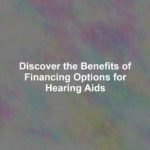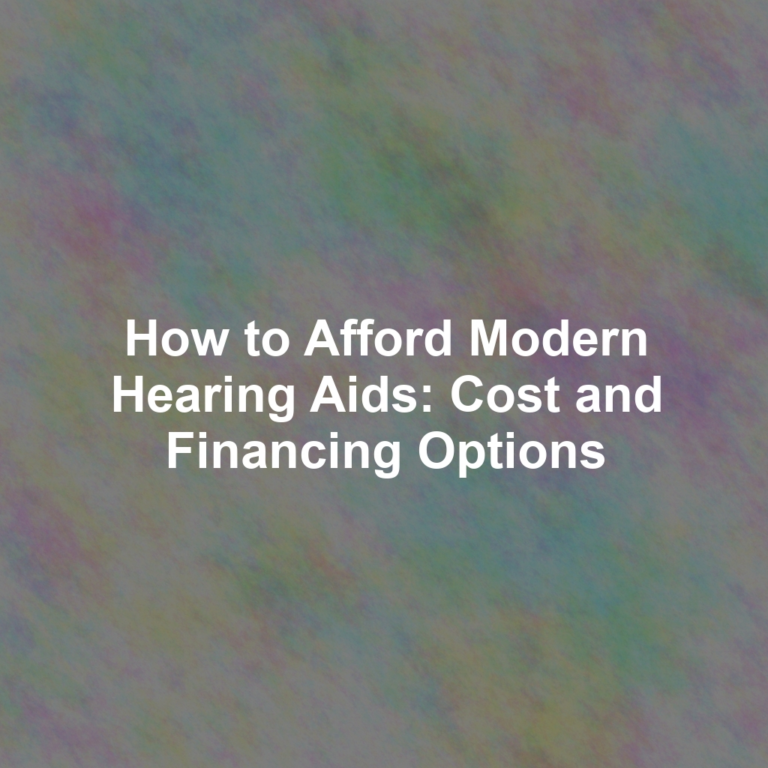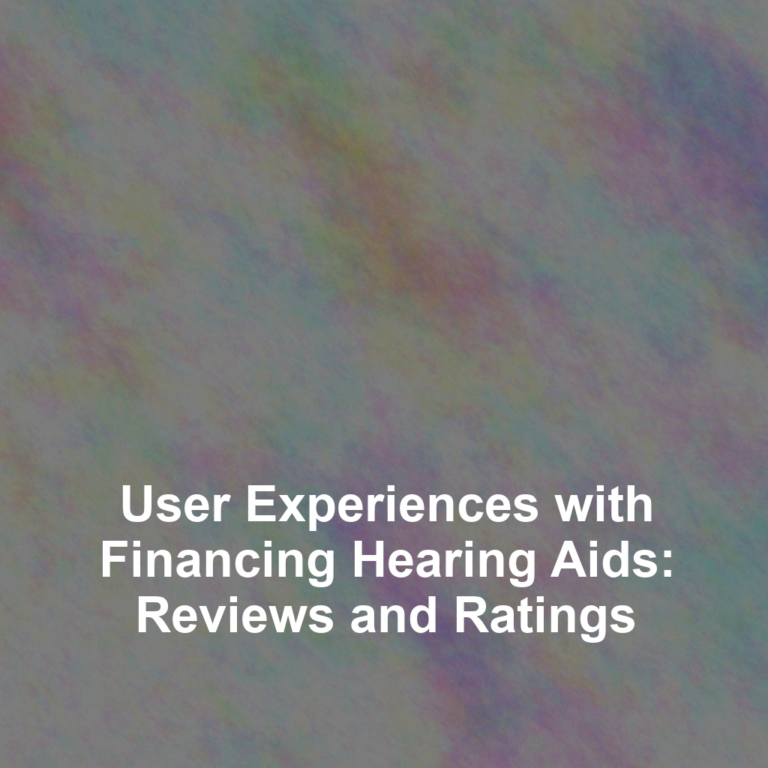Navigating the world of hearing aid financing can be like piecing together a complex puzzle, especially when youG??re unsure where the next piece fits. YouG??ve likely discovered that the cost of hearing aids can be prohibitive, but itG??s essential to know youG??re not cornered into a one-size-fits-all solution. Various financing options exist to alleviate the financial burden, from insurance coverage that may shoulder a portion of the cost to flexible payment plans that spread the expense over time.
There are also government programs for those who qualify and nonprofit organizations dedicated to assisting individuals with hearing loss. Understanding these avenues could significantly reduce your out-of-pocket costs. Yet, the key lies in identifying which options are available to you and how to effectively navigate themG??knowledge that can transform an investment into a manageable expenditure.
LetG??s examine how you can unlock these financial solutions, ensuring you donG??t miss out on the benefits hearing aids can offer due to cost concerns.
Understanding Insurance Coverage
Navigating your insurance coverage can significantly reduce the financial burden of purchasing hearing aids. ItG??s crucial to dive into the details of your policy to determine if and how much of the cost is covered. DonG??t just skim the surface; insurance plans can be intricate, with specific criteria for coverage.
Start by contacting your insurance provider directly. Ask pointed questions about hearing aid coverage. ItG??s essential to know whether you need a doctorG??s prescription or if there are preferred brands or vendors. Some policies might cover the hearing test but not the devices, or they may have a cap on how much theyG??ll pay.
YouG??ll also want to check if your plan includes a deductible that must be met before coverage kicks in, or if thereG??s a co-payment for each visit or device. Make sure youG??re clear on these details to avoid unexpected costs.
If your current insurance doesnG??t cover hearing aids, donG??t lose hope. Research other insurance plans during open enrollment periods. Some employers offer flexible spending accounts (FSAs) or health savings accounts (HSAs) that can be used for hearing aids, so consider contributing to these options if theyG??re available to you.
Exploring Payment Plans
When insurance falls short, you might consider payment plans as a flexible alternative to cover the cost of your hearing aids. Many hearing aid providers understand that the upfront cost can be a significant barrier, so they offer payment plans to ease the financial burden. This allows you to spread the expense over a period of time, making it more manageable for your budget.
Before you commit to a payment plan, hereG??s what you should keep in mind:
-
Interest Rates: Some plans come with zero interest if you pay within a certain period, while others may charge interest. Make sure you understand the terms to avoid unexpected costs.
-
Payment Terms: Look at the length of the payment plan. Longer plans mightG??ve smaller monthly payments, but youG??ll likely pay more over time.
-
Credit Check Requirements: Some payment plans might require a credit check. A poor credit score could result in higher interest rates or even disqualification from certain plans.
Always read the fine print and ask about potential penalties for late payments or paying off the balance early. By thoroughly researching your options, you can find a payment plan that fits your financial situation and finally enjoy the benefits of improved hearing without the stress of a lump-sum payment.
Utilizing Government Programs
For many individuals requiring hearing aids, government programs can provide essential financial assistance to alleviate the cost burden. You might be wondering how to tap into these resources. Start by checking if you qualify for any federal programs like Medicare or Medicaid. While original Medicare doesnG??t cover hearing aids, some Medicare Advantage plans do offer hearing benefits. ItG??s worth reviewing your policy or exploring other Advantage plans during open enrollment periods.
If youG??re younger, you may find assistance through programs like the ChildrenG??s Health Insurance Program (CHIP), which covers hearing services for children in many states. Additionally, veterans may receive benefits through the Veterans Administration, which can include coverage for hearing aids if the hearing loss is connected to their service.
On a state level, vocational rehabilitation programs can assist if your hearing loss affects your employment. These programs aim to help you maintain or find new employment and may cover the cost of hearing aids. DonG??t forget to inquire about state-funded programs specifically designed to provide hearing aids to low-income residents.
Seeking Nonprofit Assistance
Beyond government programs, numerous nonprofit organizations offer support to individuals in need of hearing aids. These organizations understand that the cost of hearing assistance can be a significant barrier, and theyG??re dedicated to helping you overcome it. YouG??ll find that they often operate on donations and grants, which allows them to provide hearing aids at little or no cost to those who qualify.
When youG??re looking for nonprofit assistance, hereG??s what you should keep in mind:
- Research is key: Dive into the offerings of various nonprofits to find one that matches your needs. Each organization has its own criteria for assistance, so itG??s important to find a good fit.
- Application process: Be prepared to fill out an application and provide the necessary documentation. This might include proof of income and a hearing test from a qualified professional.
- Persistence pays off: DonG??t get discouraged if the first organization you reach out to canG??t help. There may be others that can, so keep looking and applying until you find the right support.
Leveraging Tax Credits
Exploring tax credits can significantly reduce the financial burden of purchasing hearing aids, as you may be eligible for deductions on your federal income taxes. If you itemize deductions, you can include the cost of your hearing aids and related expenses. This includes batteries, maintenance, and repairs necessary for operating the device. YouG??ll need to ensure that your total medical expenses exceed 7.5% of your adjusted gross income to benefit.
Remember, tax laws change, so you should check the latest IRS guidelines or consult with a tax professional. They can help clarify whether you qualify for such tax breaks and guide you through the process. Certain states also offer tax credits or deductions for hearing aids, so donG??t forget to investigate your stateG??s specific tax provisions.
ItG??s worth noting that you might be eligible for a tax credit if youG??re buying hearing aids for a dependent. This can further offset your costs. So, keep your receipts and documentation organized throughout the year to make the most of these potential savings come tax time. By leveraging tax credits, youG??re not just improving your hearing; youG??re also ensuring your financial health stays sound.
Conclusion
YouG??ve got options to make hearing aids affordable. Check your insurance for coverage details, and donG??t shy away from payment plans that ease the burden.
Government programs may offer the help you need, while nonprofits often have programs just for you.
DonG??t forget to leverage tax credits, which can put money back in your pocket. Take control of your hearing health without breaking the bankG??youG??ve got this!










